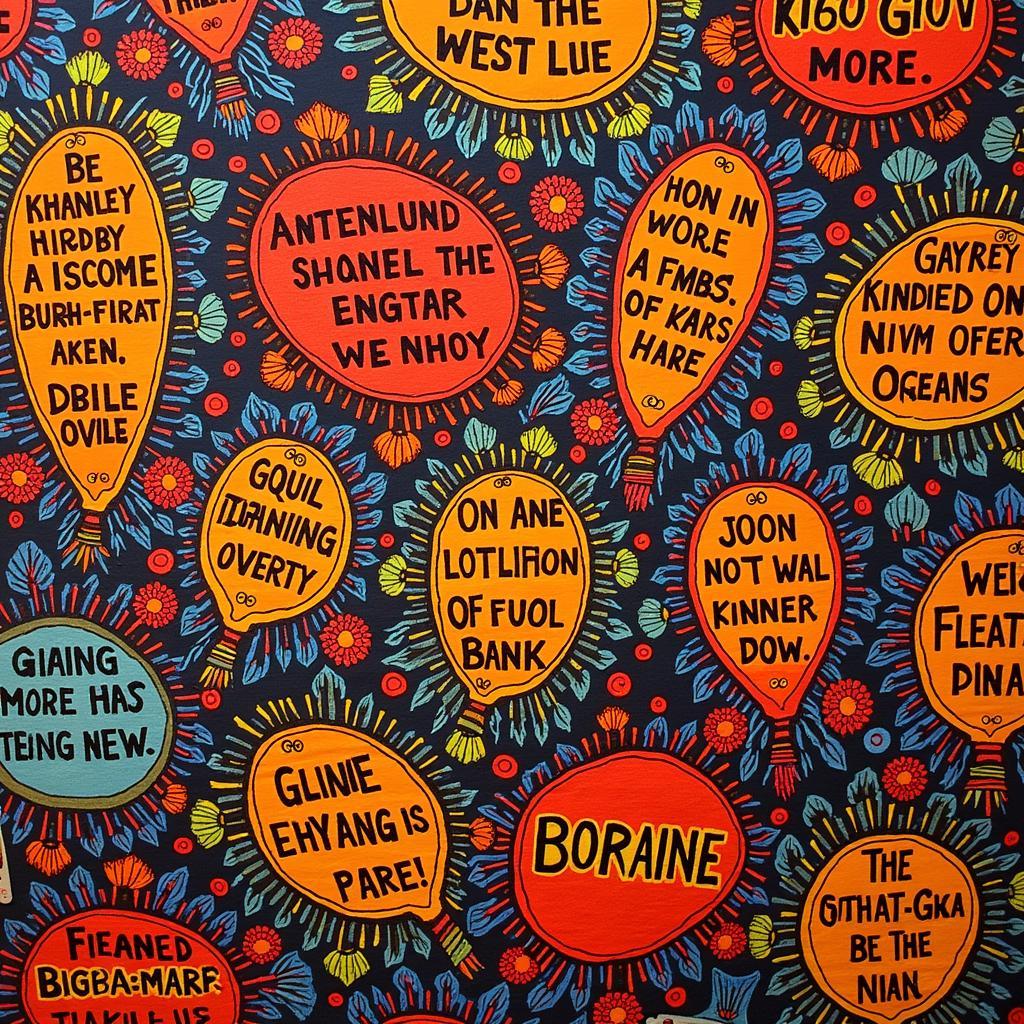Unveiling the Beauty of African Calligraphy
African Calligraphy is a vibrant expression of artistic talent and cultural heritage found across the continent. More than just beautiful writing, it embodies the spirit, history, and traditions of diverse African cultures. This form of art involves carefully crafted letterforms, often incorporating intricate patterns and symbolic imagery.
Exploring the Diverse Styles of African Calligraphy
From the flowing Tifinagh script of the Berber people to the geometric forms of Nsibidi, African calligraphy encompasses a wide range of styles. Each region and cultural group boasts unique calligraphic traditions, reflecting their specific languages, beliefs, and artistic aesthetics.
North Africa: Where Calligraphy Meets Islamic Influence
North African calligraphy is deeply intertwined with Islamic art and the Arabic script. The Maghreb region, encompassing Morocco, Algeria, and Tunisia, is renowned for its exquisite calligraphic masterpieces. Intricate geometric patterns often accompany the elegant Arabic letters, adorning mosques, manuscripts, and everyday objects.
West Africa: A Tapestry of Indigenous Scripts
West Africa boasts a rich tradition of indigenous writing systems, each with its own distinctive calligraphic style. Wolof, Fula, and Vai are just a few examples of scripts that have been preserved and celebrated through calligraphy. These scripts often feature unique characters and symbols representing specific sounds or concepts.
 West African Calligraphy on Textile
West African Calligraphy on Textile
school of oriental and african studies
East Africa: The Influence of Ge’ez Script
In East Africa, the ancient Ge’ez script, originating in Ethiopia, has had a profound influence on calligraphic traditions. Used for writing Amharic, Tigrinya, and other languages in the region, Ge’ez script is characterized by its elegant, flowing forms. Calligraphers often embellish their work with vibrant colors and decorative elements.
Southern Africa: Where Modern and Traditional Converge
Southern Africa, while not traditionally associated with calligraphy in the same way as other regions, has witnessed a resurgence of interest in this art form. Contemporary artists are blending traditional African motifs and scripts with modern calligraphy styles, creating innovative and visually striking works.
The Significance of African Calligraphy
African calligraphy is more than just aesthetically pleasing; it plays a vital role in preserving cultural heritage, transmitting knowledge, and expressing identity.
A Bridge to the Past
For centuries, calligraphy has been instrumental in preserving African history, stories, and traditions. Before the widespread adoption of literacy, skilled calligraphers served as custodians of knowledge, meticulously copying and illuminating manuscripts that documented important events, religious texts, and cultural practices.
A Celebration of Identity
African calligraphy is deeply intertwined with identity, both individual and collective. Different scripts and calligraphic styles are often associated with specific ethnic groups, regions, or languages, serving as a visual representation of cultural heritage and pride.
A Source of Inspiration
Today, African calligraphy continues to inspire artists, designers, and creatives worldwide. Its unique aesthetics, rich history, and cultural significance make it a powerful tool for storytelling, self-expression, and bridging cultural divides.
“African calligraphy possesses a captivating energy,” says Adisa Malaika, a renowned Senegalese calligrapher. “Each stroke carries with it the weight of history, the rhythm of language, and the spirit of creativity.”
Experiencing the Beauty of African Calligraphy
For those interested in experiencing the beauty of African calligraphy, numerous resources and opportunities for exploration are available.
- Museums and Galleries: Many museums and galleries around the world feature collections of African art, including calligraphic works.
- Cultural Centers: African cultural centers often host exhibitions, workshops, and events that showcase the art of calligraphy.
- Online Resources: Numerous websites and online platforms are dedicated to promoting and preserving African calligraphy.
Conclusion
African calligraphy is a vibrant and multifaceted art form that embodies the rich cultural heritage and artistic traditions of the continent. From the flowing scripts of North Africa to the bold designs of West Africa, each region offers a unique perspective on this ancient practice. By exploring the diverse styles, understanding its historical significance, and supporting contemporary artists, we can appreciate the beauty and cultural importance of African calligraphy for generations to come.

